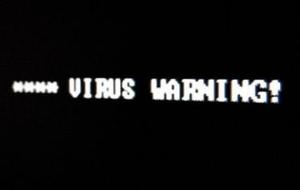Iran's bombIran admits its nuclear facilities are under massive cyberattack
Iran has confirmed that 30,000 computers in the country’s power stations, including the nuclear reactor in Bushehr, have been attacked by the Stuxnet worm; the Stuxnet worm is described by experts as the most complex piece of malware ever designed; once Stuxnet gains access to a plant’s computers, it hunts out specific software that controls operations such as the opening and closing of valves or temperature regulation; by halting those processes it can cause extensive damage to nuclear power stations, power grids or other industrial facilities; the high number of infections in Iran have led experts to conclude that the worm may have been designed in the United States or Israel to disable Iran’s controversial nuclear facilities

Iran confirms computer system infections // Source: webuser.co.uk
Iran’s nuclear agency has admitted it is battling to contain a computer worm that experts say was designed by a hostile government — read: Israel — and has the capacity to shut down industrial plants (see “Experts: Israel used cyber weapon to disrupt Iran’s nuclear reactor,” 23 September 2010 HASNW). Iran has confirmed that 30,000 computers in the country’s power stations, including the nuclear reactor in Bushehr, have been attacked by the Stuxnet worm.
Iranian media reported there had been no significant damage.
Sky News reports that the Stuxnet worm is described by experts as the most complex piece of malware ever designed. Once it gains access to a plant’s computers, it hunts out specific software that controls operations such as the opening and closing of valves or temperature regulation.
By halting those processes it can cause extensive damage to nuclear power stations, power grids or other industrial facilities.
Alan Bentley, senior vice president of IT security company Lumension, told Sky News Online: “The worrying thing about Stuxnet is that mischief or financial reward wasn’t its purpose, it was aimed right at the heart of a critical infrastructure. Stuxnet isn’t just another piece of malware. It is the most refined piece of malware ever discovered.”
The worm was discovered in July and attacks were reported primarily in Iran but other countries such as Pakistan and Indonesia have been affected.
The high number of infections in Iran have led some to conclude that the worm may have been designed in the United States or Israel to disable Iran’s controversial nuclear facilities.
Technology security provider Symantec told the Financial Times it would have taken a team of ten specialized programmers about six months of full-time work to design Stuxnet.
“Government organizations across the world need to think carefully about how they are protecting their power stations, water plants and industrial units, from malicious attack,” Bentley added.
